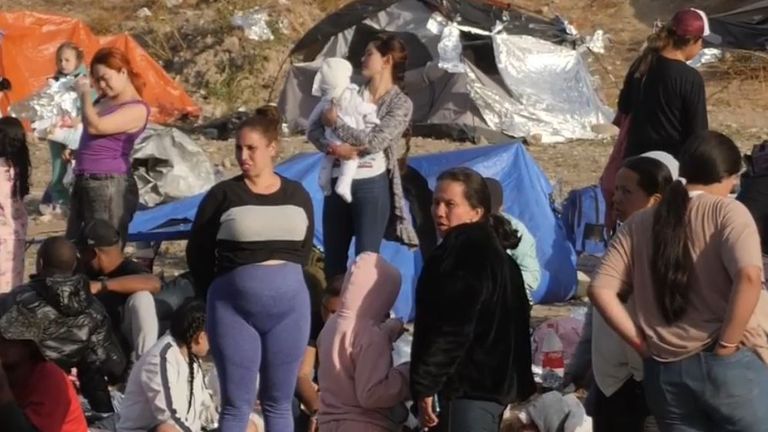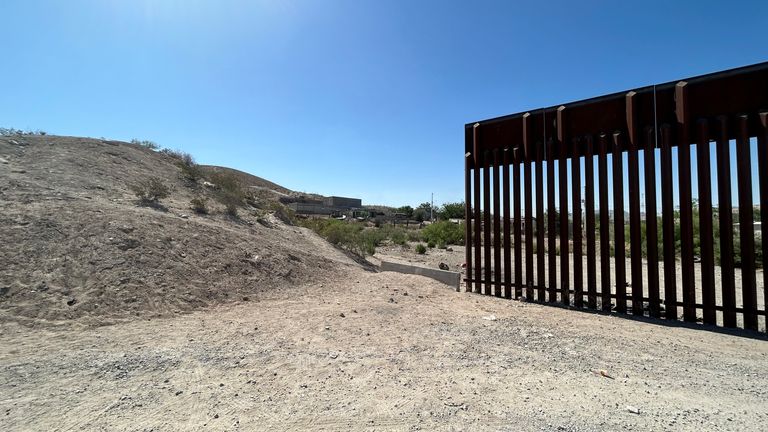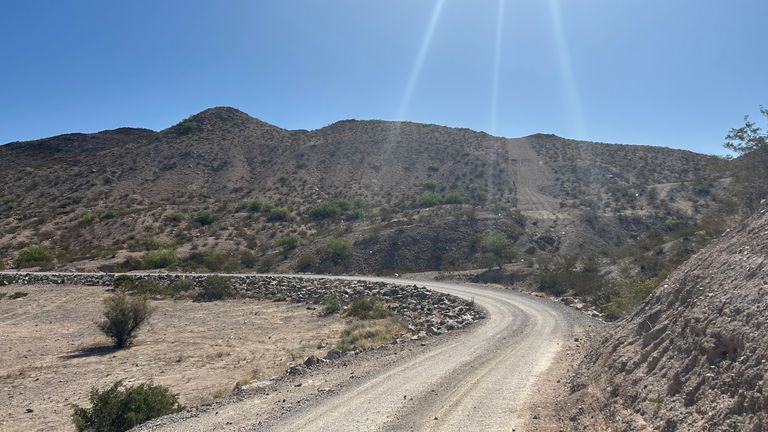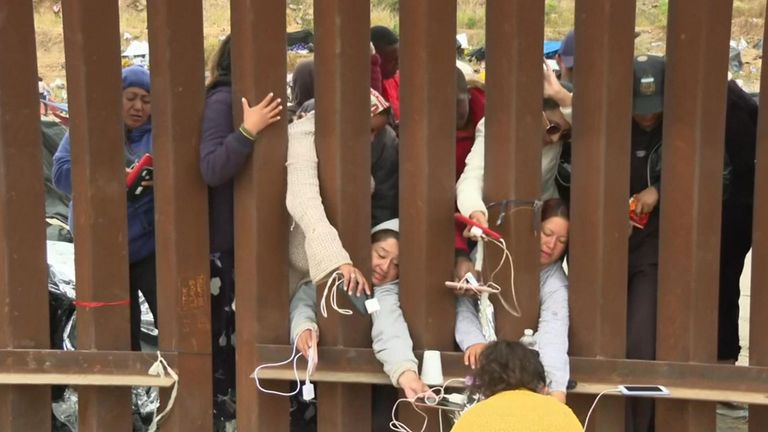They couldn’t build the wall over a mountain. It’s why the US-Mexico border wall ends at the foot of Mount Cristo Rey and is reduced to a block of concrete a foot high.
It’s the “add-on” to fill the gap between wall and mountain, like something you’d use to zone off an industrial estate car park.
And yet, for five metres, it’s what separates the US from Mexico.
Little wonder that migrants choose this mountain as a preferred route into the US, still.
Title 42 or not, the routine continues.
The day after the old law expired, we watched as groups of migrants made the journey across the mountain.
I counted a dozen, concealed amongst rocks, visible in the distance through a searing heatwave amid the sand and shrub-land typical of the border topography.
Read more:
What does the end of Title 42 mean?
Thousands of migrants travel to US border
The El Paso church that has become a symbol of the broken US immigration system
They scouted the terrain below, one using binoculars, out of sight of the US Border Patrol helicopter that buzzed in aerial pursuit.
An officer on horseback did the ground search atop the mountain, while colleagues in vehicles gave chase at its foot.
It’s a game of cat and mouse – too easy to forget that it’s human beings at its heart.
Debate around political fallout and election impact drown out individual stories of hope and anticipation, as illustrated on Mount Cristo Rey.
We witnessed one group of migrants emerge, running from behind rocks, with a man the age of a grandad shuffling behind.
Some minutes later, a woman on her own made a break for it along a rail track that bordered the base of the mountain.
I can’t speak to their story or their reasons for making illegal passage to the US – they were moving too quickly – but, from a distance, they did embody the plight of the migrant, often under-reported.
Desperation.



